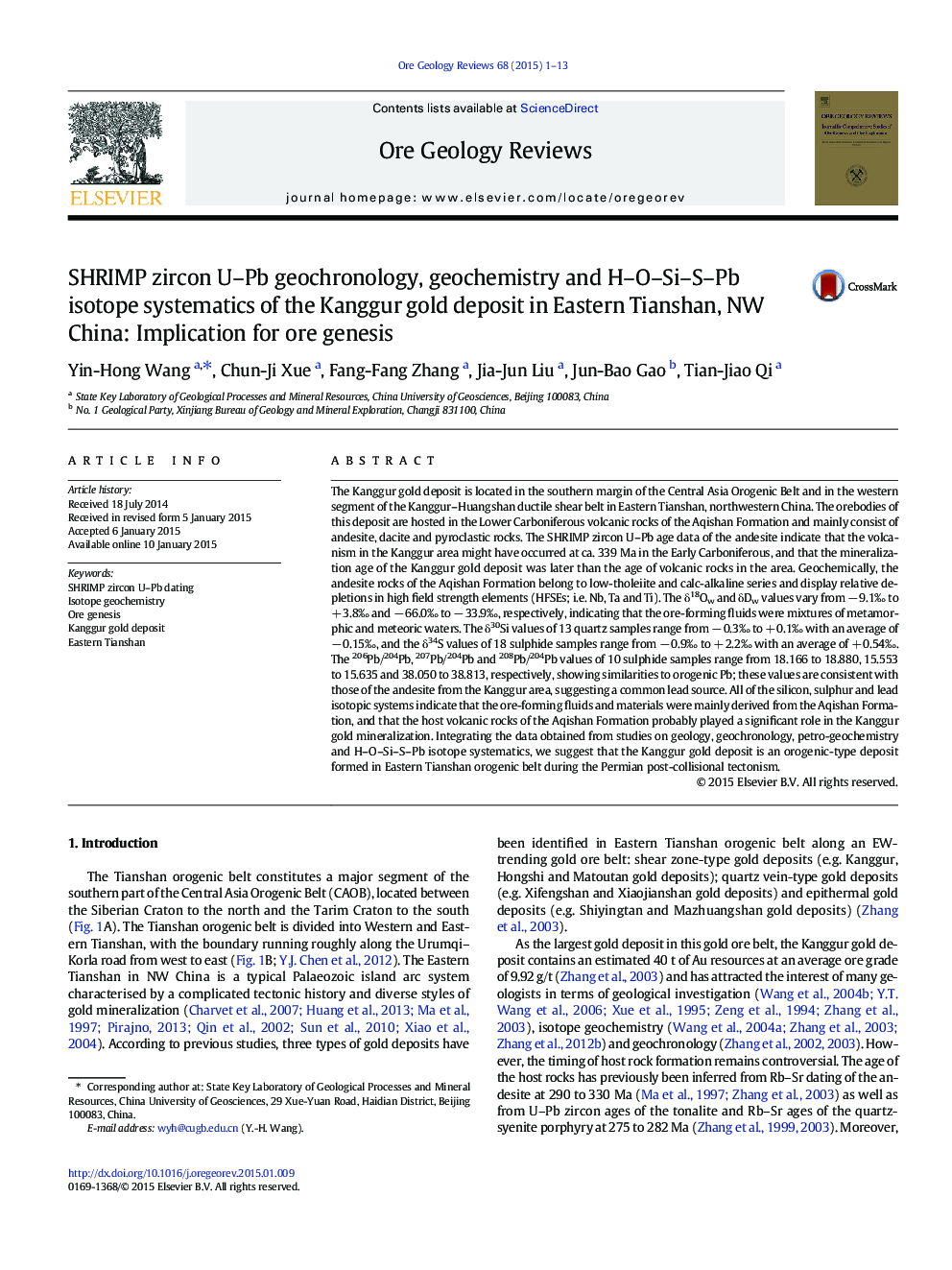| کد مقاله | کد نشریه | سال انتشار | مقاله انگلیسی | نسخه تمام متن |
|---|---|---|---|---|
| 4697345 | 1637236 | 2015 | 13 صفحه PDF | دانلود رایگان |
The Kanggur gold deposit is located in the southern margin of the Central Asia Orogenic Belt and in the western segment of the Kanggur–Huangshan ductile shear belt in Eastern Tianshan, northwestern China. The orebodies of this deposit are hosted in the Lower Carboniferous volcanic rocks of the Aqishan Formation and mainly consist of andesite, dacite and pyroclastic rocks. The SHRIMP zircon U–Pb age data of the andesite indicate that the volcanism in the Kanggur area might have occurred at ca. 339 Ma in the Early Carboniferous, and that the mineralization age of the Kanggur gold deposit was later than the age of volcanic rocks in the area. Geochemically, the andesite rocks of the Aqishan Formation belong to low-tholeiite and calc-alkaline series and display relative depletions in high field strength elements (HFSEs; i.e. Nb, Ta and Ti). The δ18Ow and δDw values vary from − 9.1‰ to + 3.8‰ and − 66.0‰ to − 33.9‰, respectively, indicating that the ore-forming fluids were mixtures of metamorphic and meteoric waters. The δ30Si values of 13 quartz samples range from − 0.3‰ to + 0.1‰ with an average of − 0.15‰, and the δ34S values of 18 sulphide samples range from − 0.9‰ to + 2.2‰ with an average of + 0.54‰. The 206Pb/204Pb, 207Pb/204Pb and 208Pb/204Pb values of 10 sulphide samples range from 18.166 to 18.880, 15.553 to 15.635 and 38.050 to 38.813, respectively, showing similarities to orogenic Pb; these values are consistent with those of the andesite from the Kanggur area, suggesting a common lead source. All of the silicon, sulphur and lead isotopic systems indicate that the ore-forming fluids and materials were mainly derived from the Aqishan Formation, and that the host volcanic rocks of the Aqishan Formation probably played a significant role in the Kanggur gold mineralization. Integrating the data obtained from studies on geology, geochronology, petro-geochemistry and H–O–Si–S–Pb isotope systematics, we suggest that the Kanggur gold deposit is an orogenic-type deposit formed in Eastern Tianshan orogenic belt during the Permian post-collisional tectonism.
Journal: Ore Geology Reviews - Volume 68, July 2015, Pages 1–13
